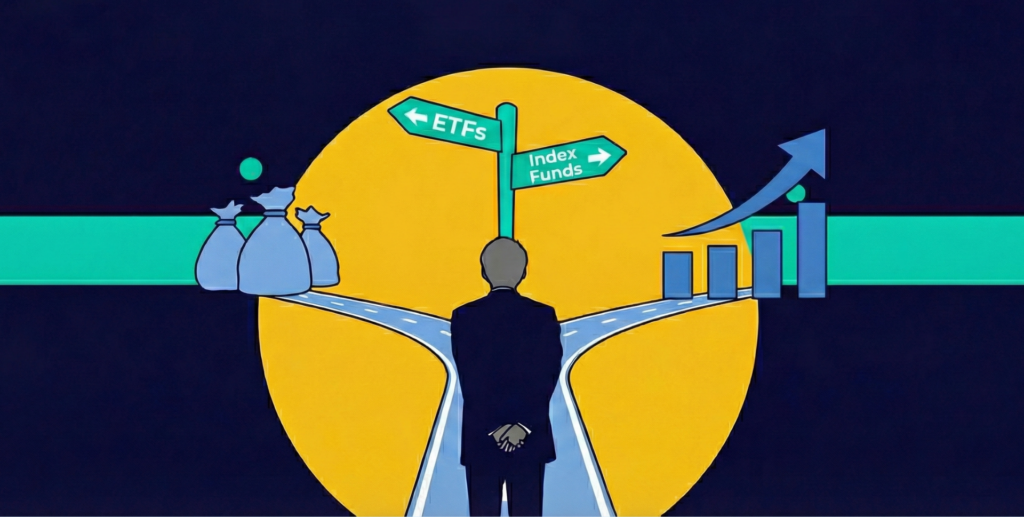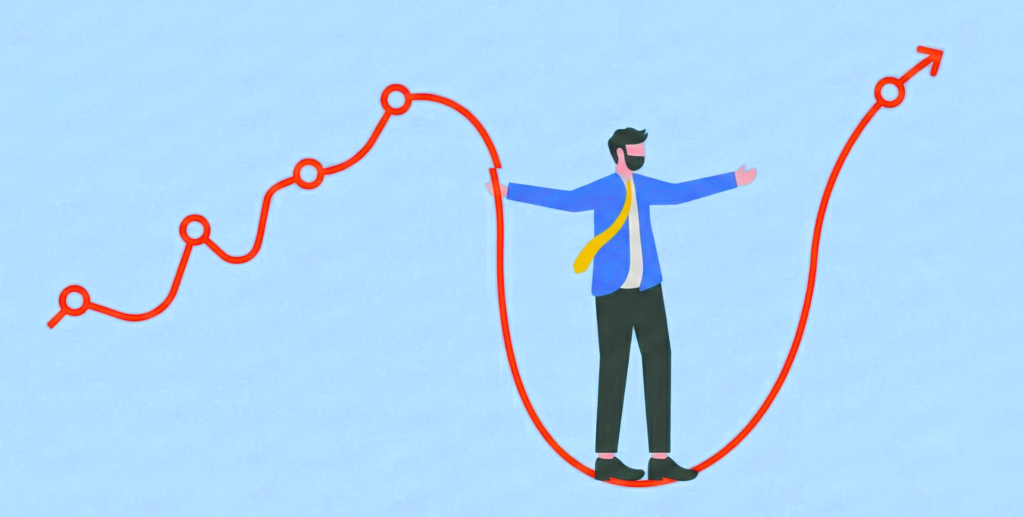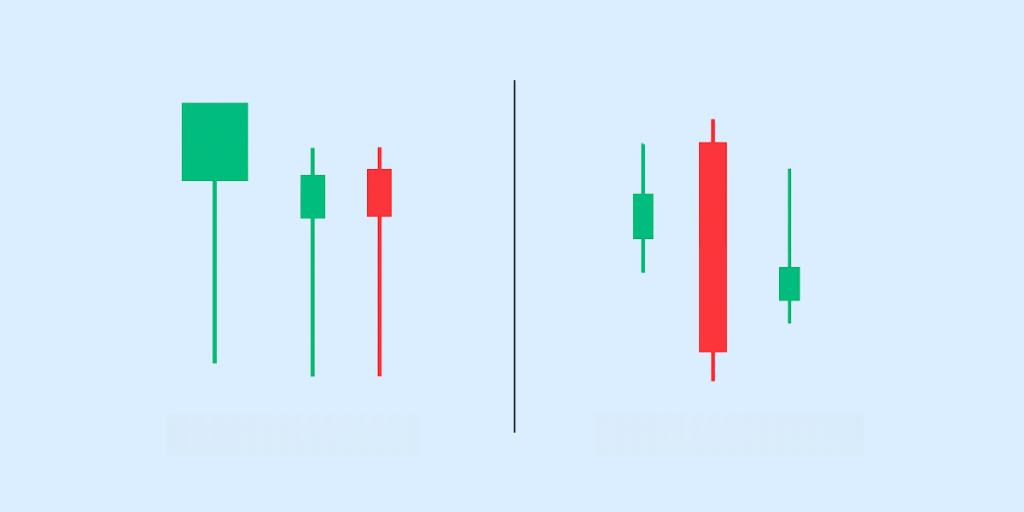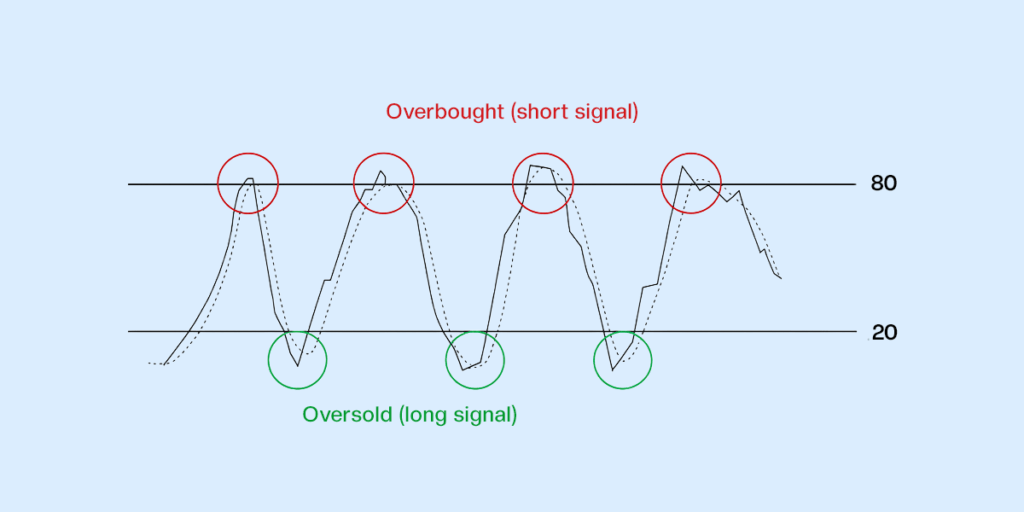Quick Summary:
- The stock market can provide wealth-building opportunities in multiple forms but carries all sorts of risk for many reasons including; market risk, liquidity risk and political risk.
- You can limit a number of risks by knowing your risk tolerance, having a diversified investment strategy and implementing dollar-cost averaging and other investment strategies.
- Diversification denotes the spreading of investments across a range of asset classes, sector holdings, market caps (small, medium, and large), and geographical venues (domestic, international, and global).
- Spend your time in the market. If you focus on being engaged as long as possible, not timing appropriately, you avoid several risks by compounding your wealth as well as living through periods of emotion and volatility.
- Investing in index funds is one of the lowest-cost, diversified strategies for shapes how the general market and is advantageous to investors because of the reduced company and sector-specific risks and lower managed fees.
The stock market is one of the most lucrative ways to make money and build wealth over the long term. But it’s not without its fair share of risks. The types of risk in the stock market include market risk, liquidity risk, interest rate risk, business risk, currency risk, timing risk, and political risk, among others.
A war can break out in one part of the world, and the stocks in the US can react to that by tanking. There can be a change in leadership in China, a new product launched by a competitor firm, regulatory changes, inflation and employment data release, a scandal involving the top management, supply chain disruptions, a merger and acquisition in the industry, and so many other macro- and micro- economic events that can impact stock prices.
So, is it possible to mitigate such stock market risks? It certainly is.
1. Properly prioritising your finances
If you dive straight into investing in the stock market without a proper investment strategy or an understanding of your finances, it may seem more like gambling instead of investing. Without understanding what your financial goals are, what your risk tolerance level is, the nature of the stock market, the ways you can invest in it, why diversification is essential and how to go about it, you will simply be putting in your money in random stocks in a random manner and hope for the best. Not only will this increase your exposure to investment risks in the stock market, but may also cause you to lose your capital.
To avoid this, it’s crucial to understand certain approaches to investing in the stock market that help mitigate investment risks.
2. Six ways to mitigate investment risks in the stock market
Here are six essential ways to mitigate investment risks in the stock market that you should know about:
1. Understand your risk tolerance
Before you make any investment decisions, it’s essential to understand how much risk you are capable of taking and willing to take. This primarily depends on factors like your age, income, financial obligations, number of dependents, and personality.
For instance, individuals who are in their 20s and 30s with decades of income-earning years ahead of them tend to have a higher risk tolerance and can invest more aggressively. Conversely, someone close to retirement with multiple dependents tends to have a lower risk tolerance and has to focus more on capital preservation instead of capital appreciation through high-risk investments.
It’s important to remember that your risk tolerance is going to be very specific to your life, priorities, and overall financial profile. For instance, an individual can be as young as 25, but if they have multiple dependents and have taken on a massive loan like a home loan already, then their risk tolerance may be a lot lower than another 25-year-old without any dependents or loan obligations.
Understanding your risk tolerance allows you to invest in asset classes whose risk-return profile aligns well with your financial profile. It also serves as the guiding principle for the ideal asset allocation of your investment portfolio and makes sure that you are neither reckless nor suboptimal with your investible corpus.
2. Dollar-cost averaging
Dollar-cost averaging is an investment strategy that is very helpful in mitigating investment risks in the stock market. It involves investing a fixed amount of money at regular intervals in an investment product over a period of time, irrespective of its market price. You can apply this strategy through Systematic Investment Plans (SIPs) in stocks, exchange-traded funds, and mutual funds to hedge against market volatility.
Pros of dollar-cost averaging
Dollar-cost averaging does away with the need to time the stock market, as it focuses on disciplined investing and not on the market price. It also ends up averaging the overall cost by buying more units of the investment when the price is low and fewer units when the price is high.
It also helps you stay away from emotional investing based on short-term market fluctuations and market sentiment. It’s an easy and straightforward investment strategy to apply and can be automated through SIPs. It’s also a great tool for investors with a limited investible corpus, as it allows them to build wealth through smaller investments over a long period.
Cons of dollar-cost averaging
For investors who have substantial capital to invest, dollar-cost averaging may result in missed gains in case the market is experiencing a sustained bull run. Another con of this strategy is that it is not suitable for all investment products and horizons. For instance, it’s not effective for short-term investment horizons and goals.
While timing the market can be tricky, it’s not entirely impossible, especially for experienced investors. But dollar-cost averaging takes away the benefit of timing the market and entering the market at a low to apply the golden investment principle of buying low and selling high.
3. Diversification
Diversification essentially means spreading your capital across different asset classes, sectors, and geographies so that your exposure to any one investment is not too high. This way, even if one or more investments end up doing poorly, the gains from the other investments in your portfolio can balance out the resulting losses. Here are the four main kinds of diversification:
Diversification across asset classes
Even if your risk tolerance is high and your primary focus is equity investments, you should not invest 100% of your capital in equity. You should have some proportion of debt, gold, and other assets in your portfolio to hedge stock market risk. This is because different asset classes respond to different micro- and macro-economic factors differently..
Diversification across market caps
A key aspect of diversifying your stock market investments is diversifying across market caps. Listed companies will either be large-cap, mid-cap, or small-cap, depending on their market capitalisation. Each type has certain strengths and weaknesses. For instance, large-cap companies tend to be relatively safer because they are well-established and tend to be market leaders. Small-cap companies, on the other hand, are more vulnerable to market volatility. However, their potential for higher returns is also far greater than large-cap and mid-cap stocks.
Diversification across sectors
Another aspect of diversifying your stock market investments is diversifying across sectors. If an investor had only invested in tech companies during the pandemic, expecting the pandemic boom to be sustained, they would have suffered losses soon after. Having a high concentration in any one sector is not advisable. It’s essential to diversify across multiple sectors that you believe have growth prospects and ones that you understand well.
Diversification across geographies
Finally, diversification across geographies is also important now. In today’s day and age, where the world is a global village, why should your investment portfolio not benefit from it? You don’t have to limit your investments to only the Indian stock market. In fact, you shouldn’t. Not only does it increase portfolio risk, but also takes away the opportunity of earning higher returns. It is important to invest in stock markets like the US, where not only most of the global leaders across industries are listed but also where the economy is very resilient, as well as investing in emerging markets.
You can now easily access the US stock market through Appreciate. Add US stocks and ETFs to your portfolio in a simple, quick, and cost-effective manner, minimising investment risks and maximising returns. Download the app today!
4. Focus on time in the market
Timing the market is rarely beneficial, so instead of trying to do that, it’s advisable to focus on the time spent in the market in order to mitigate stock market risks. This means that the longer you stay invested, the better it is for your portfolio. This is primarily for two reasons.
The first is the power of compounding. When you let your capital and the returns on your investment stay invested instead of booking profits or exiting your positions in the short term, you’re allowing your returns to earn you more returns. This accelerates the process of wealth generation and allows you to build a substantial corpus over the longer term.
The second is hedging against short-term fluctuations. When you are investing in the stock market, the longer your investment horizon, the better it is. This is because it allows your investments to recover from short-term market fluctuations. In the long term, the market always recovers, and hence, instead of booking losses by panicking and exiting your positions, you should stick to your long-term investment strategy.
5. Invest in index funds
Another strategic way to mitigate investment risks in the stock market is by investing in index funds. Index funds are mutual funds and ETFs that track a specific stock market index and adopt a passive investing strategy. Their aim is to replicate the performance of their reference index instead of outperforming it. They are beneficial for long-term equity investors as they offer a simple, transparent, low-cost, diversified way to invest in the stock market.
Since most index funds typically hold a broad range of stocks, there is inherent diversification, and there is lower company-specific and sector-specific risk. Additionally, because index funds aim to mimic the performance of the benchmark index merely, the management costs associated with them are lower. And most importantly, historically, broad market indices have typically increased in value over the long term. The overall stock market tends to outperform any single investment over longer investment horizons, and hence, index funds are a great addition to your investment portfolio.
6. Continuously monitor your portfolio performance
Long-term investing, passive investing, diversification, and more don’t mean that you invest and forget about your portfolio. It’s crucial to continuously monitor your portfolio’s performance and make necessary changes. When you monitor your portfolio’s performance, you can exit investments that have been underperforming consistently, alter the asset allocation if it deviates from your target allocation, and change your investment strategy depending on changes in your life stage and financial goals.
Since both the stock market and your life are dynamic, you cannot just devise an investment strategy once and forget about it. As the market conditions and your life circumstances change, it’s important to have your investment portfolio reflect those changes.
You can’t escape risks but you can hedge against them
Investing in the stock market is a risky proposition. And no matter how smartly you invest, there is no escaping the risks. However, by applying the above strategies, you can hedge against stock market risks. It’s like driving a car. You can have car insurance, wear a seatbelt, drive sober, follow traffic rules, and stay vigilant on the road — all these factors that are in your control and that ensure you reduce the risk of an accident on the road.
To diversify your investments, apply dollar-cost averaging, align your investments with your risk tolerance, periodically rebalance your portfolio, and more, invest through Appreciate. It’s essential to have a smart and trusted investment platform in your investment journey to make it easier to hedge market risks and capitalise on market gains.
Frequently asked questions
What are some ways to minimise the risk when investing in the stock market?
Some ways to minimise the risk when investing in the stock market include understanding your risk tolerance and investing in assets accordingly, diversifying, and using strategies like dollar-cost averaging.
What is one of the most effective ways to reduce investment risk?
One of the most effective ways to reduce investment risk is diversification. This includes diversifying across asset classes, market caps, sectors, and geographies to ensure that you don’t have high exposure to any one investment or market. This helps hedge investment risk, as losses in one investment won’t cripple your entire portfolio when your capital is spread across different investments and markets strategically.
Which is the greatest risk when investing in stocks?
The greatest risk when investing in stocks is market risk. It is the risk that you may lose your capital because of the overall performance of the stock market in relation to price changes and volatility. This includes the potential for losses due to factors like economic downturns, market sentiment, geopolitical events, inflation, etc.
Why are stocks considered a high-risk form of investment?
Stocks are considered a high-risk form of investment because there is no guarantee of returns and stability due to the inherent market volatility. There is the risk of capital losses as well as underperformance.
How can too much risk affect your investing experience?
Too much risk can not just increase the potential for losses but can also increase emotional stress. It can make it harder to meet your financial goals in the desired timeline and can add to financial uncertainty. Hence, it’s essential to understand your risk tolerance and invest accordingly. Taking on more risk than your risk tolerance allows for is not advisable.
Which two factors have the greatest influence on risk for an investment?
The asset class and investment horizon tend to have the greatest influence on risk for an investment. Different asset classes have different risk profiles. For instance, stocks tend to have a high-risk profile, while fixed-income assets like bonds tend to have a lower-risk profile. As for investment horizons, the longer the investment horizon, the lower is the investment risk in general.























